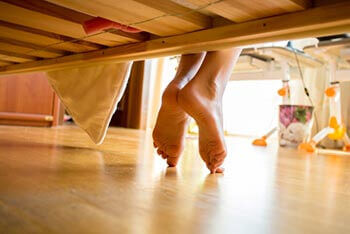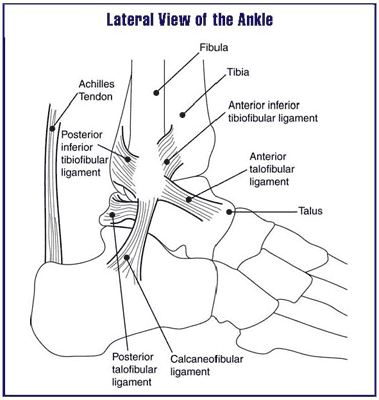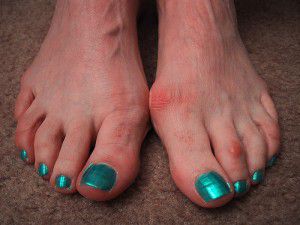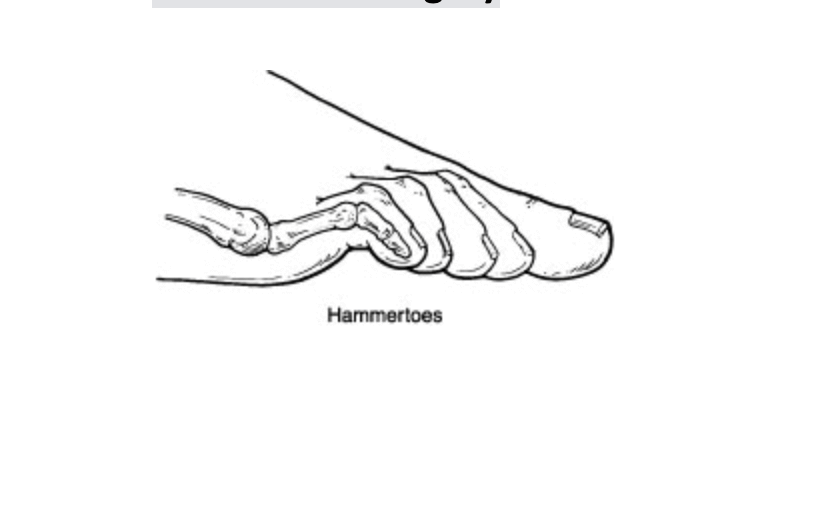dr brandon nelson
Displaying items by tag: dr brandon nelson
Dr Brandon Nelson, A Board-Certified Physician & Surgeon Discusses Bunion Surgery, The Lapiplasty
.jpg)
Surgery for a bunion is most used for long term correction, meaning realigning the bone for the foot to function in a stabilized fashion. Many bunion surgeries are what is called a head procedure. This is when the metatarsal head is cut and pinned or screwed in place. The procedure itself is straightforward and can usually be done in under an hour. The average person will be walking the entire post operative phase and can be in a normal shoe in 4-6 weeks typically.
Should I fix my bunion?
I think the answer to this question is does it hurt or do you have a hard time fitting in shoes or doing the activities you enjoy because of the bunion? Most people with a bunion at some point will answer yes to this question and that is a good time to think about fixing it. The other consideration is do other parts of my foot hurt because of the bunion or are my toes changing position because of my bunion? Again if this is happening now maybe the time to fix it.
Is Surgery going to hurt?
Yes, surgery is going to be uncomfortable. However, we work very closely with our post-operative patients to make sure their pain is well controlled during recovery. It is imperative that patients get a head of the pain and take all medications that are prescribed.
How long does it take to recover?
This is a harder question to answer. There are many factors that lead to recovery but in general. Some patients are walking on their feet immediately and some must wait weeks. The return to shoe can be as early as 4 weeks or longer like 10-12 weeks. Most sports or activities have no limitation at 3 months.
Does bunion surgery need to be done at the hospital?
A lot of surgeons still use the hospital or outpatient surgery center for bunion surgery. These facilities can be very expensive. My practice has a surgical suite which saves large amounts of money and time for every patient.
If you have a bunion and are in pain, I can help. Make an appointment with me today at 425-391-8666 or fill out a contact form online.
Sincerely,Dr Brandon Nelson
American College of Foot & Ankle Surgeons
Dr Brandon Nelson, A Board-Certified Physician & Surgeon Discusses Heel Pain That Will Not Go Away

Heel pain is by far the most common thing I see in the office. The number one cause is still being plantar fasciitis. Most patients with heel pain will have resolution of their pain within a month of seeing me. However, there is a small percentage of patients that do not get better and further work up is warranted. We call these patients the outliers or red herrings. There are about 2 main causes of outliers or red herrings. These are nerve issues, i.e., Baxter’s neuritis or a stress fracture.
Baxter’s neuritis is not as common as plantar fasciitis. It is basically an entrapment of a nerve near the heel. The nerve becomes irritated and compressed. The symptoms can be similar to plantar fasciitis. The most common symptom seems to be burning in the heel. Burning or tingling are often associated with nerve pain. Usually, a nerve conduction study is required to diagnose this entrapment. Once it is diagnosed sometimes a local injection of the nerve can help or a prescription orthotic to offload the area can be quite helpful. Baxter’s neuritis differs from a stress fracture in presentation usually.
A stress fracture of the heel bone or calcaneus both can cause heel pain however usually in different areas. With the stress fracture it is usually a constant pain that is a dull ache or throb. Additionally, there is often an increase in training that has resulted in a stress fracture. Usually, a stress fracture will require an MRI and most resolve with time and protected weight bearing. If you are suffering from heel pain, especially if it has been going on for more than a couple weeks I can help. If you are experiencing foot or ankle pain, give us a call at 425-391-8666 or make an appointment online.
Sincerely,
Dr Brandon Nelson, A Board Certified Physician & Surgeon, Discusses Achilles Tendonitis

Many athletes will suffer from the dreaded Achilles tendonitis. Increased training and often a change in activities can precipitate this pathology. It is quite frustrating and can sideline many active patients. I personally have dealt with this issue and can understand the challenges associated with it.
The Achilles tendon is the main unit in the lower extremity for the push off phase of gait. It contracts and helps individuals with forward motion. It is constantly under load and being utilized with every step. It is a wonder that more people don’t suffer from tendonitis.
The main cause continues to be overuse. It often is seen in runners and joggers and triathletes. In my office, runners seem to suffer from it. Runners seem to have the biggest demand on this tendon and overuse is quite easy. However, they are not the only one’s, basketball players seem to be affected as well. Probably related to the loading requirements of jumping. Regardless of the causes, it is important to seek help early in the process.
Early intervention seems to be the key in recovering from Achilles tendonitis. I also encourage stretching to all my athletes. It is an easy thing to skip as it is time consuming and we can be pinched for time. Additionally, hydration is essential and I find collagen supplements to be beneficial as well. If you have any signs or symptoms do not delay. I can help get you back out participating in your favorite activities. If you are experiencing foot or ankle pain, give us a call at 425-391-8666 or make an appointment online today.
Sincerely,
Dr Brandon Nelson, A Board Certified Physician & Surgeon, Discuss Heel Pain and When to See A Physician

Heel pain is by far the most common pathology I see in the office. It is so common among adults it is estimated that 1 out of every 4 currently are experiencing heel pain. It is also postulated that 60% of all adults will have heel pain at some point in their lives. It is important to understand the causes of heel pain and when to seek professional help. The most common causes are plantar fasciitis, Achilles tendon issues and nerve entrapments or irritation.
Plantar fasciitis is by far the most common cause. It often is described as a dull ache or bruised sensation. This is usually on the bottom of the heel. Plantar fasciitis can be painful in the morning, first step pain, or after activities. One of the most common presenting symptoms is pain after any period of rest. Plantar fasciitis is an overuse injury and I recommend always seeking physician input on this one as you may develop tearing in the fascia with increased symptoms.
Achilles tendon issues can also present with pain in the heel or around the heel. The Achilles tendon is the thickest strongest tendon in the human body and it is constantly under load. It is therefore prone to developing issues especially in physically active individuals. The Achilles tendon type pathologies often have swelling or sharp shooting pains near the heel. Again this is one to seek help early as the average recovery of Achilles tendon issues can take 4-6 months.
Nerve entrapments of the heel or Baxter’s neuritis or tarsal tunnel syndrome often have burning or electrical type symptoms. There is a correlation with other nerve issues in the body like neuropathy or carpal tunnel or fibromyalgia. Nerve issues are an urgent matter and early intervention is key so do not wait on these ones. I recommend immediately making an appointment. The nerves usually require testing to identify and prevent long term damage.
If you are having heel pain I can help call and schedule an appointment today. Give us a call at 425-391-8666 or make an appointment online.
Sincerely,
Dr Brandon Nelson, A Board Certified Physician and Surgeon, Discusses Relief from Neuromas
I see many patients that come in for burning or tingling of the forefoot. Some even relate a stabbing or shooting pain in the front of the foot. Typically they often describe pain that is worse with shoe gear and relieved by taking off their shoes and rubbing their feet. These are very typical symptoms of somebody with nerve pain.
Neuromas are one of the most common causes of nerve pain in the feet, specifically the forefoot. Neuromas occur typically in females between the ages of 40-60, however they are common in men of the same ages as well. The neuromas itself occurs where two nerves in the feet come together. These two nerves are the medial and lateral plantar nerves that are branches of the posterior tibial nerve. They come together to form one nerve in the 3rd interspace of the foot. This is the region between the 3rd and 4th toes.
Most people will present with numbness and tingling. However some patients just present with pain to the toe or toes. Often there can be a change in shoe gear or activities that precipitate the nerve irritation. The prevailing theory is that this nerve is getting mechanically stimulated or crushed by the surrounding structures or the foot, most likely the metatarsal bones. Repetitive irritation leads to the symptoms that we see i.e., numbness and pain.
There are many great options to relieve nerve pain or neuroma pain. However the most important part of that is identification of the cause. It is paramount to see a provider that has experience and expertise in this area. I have been treating neuromas for over 15 years and have many excellent options to relieve pain and neuromas symptoms long term. If you are experiencing nerve pain I would love to help you get your life back. Give us a call at 425-491-8666 or make an appointment online.
Sincerely,
Dr. Brandon Nelson, A Board-Certified Physician and Surgeon, Discusses the Lapiplasty and Bunion Surgery

Bunion surgery has been around for almost 200 years. There have been many types of bunion surgeries performed during this time. The vast majority involved cutting the bone and realigning the joint. The recent years have allowed for advancement in correction techniques and better long-term outcomes. Presently most surgeons either utilize a head technique, cutting the bone and realigning, or a base technique, which usually involves fusion or a Lapidus type procedure.
Lapiplasty has improved outcomes by creating a system that is reproducible and easier for surgeons to execute. It involves a system of tools that the surgeon gets the proper correction for all patients. The Lapiplasty is a new way of doing a bunion surgery that has been around for over 100 years. The Lapidus bunionectomy is one of the most tried and true bunion correction surgeries and has great outcomes. It is the primary work horse of bunion surgery and is probably the most common procedure I utilize. If you have a painful bunion and would like to have it evaluated, make an appointment today and I will help you come up with a long term plan. Give us a call at 425-391-8666 or make an appointment online today.
Sincerely,
Dr Brandon Nelson, A Board Certified Physician & Surgeon, Discuss Bunion Surgery

Bunion surgery is probably the most common procedure I execute. Most bunions can be fixed in about 2 hours and provide great long-term results. The most important factor is to have a thorough workup and x-rays to evaluate the foot. Once the foot and x-rays have been done then a plan for surgical or conservative care can be formulated.
If surgical intervention is called for, our office has an onsite surgery center which can save the average patient thousands of dollars as compared to free standing ASC’s or the Hospital. Our certified surgery center provides the best possible patient experience and has been functioning for over 15 years. If you have a bunion and have been contemplating what to do, I can help. I really enjoy helping people with bunions. Please make an appointment and we can discuss your options. Give us a call at 425-391-8666 or make an appointment online today.
Sincerely,
Lapiplasty Surgeon Dr. Brandon Nelson, Discusses 3-D Bunion Correction

The Lapiplasty technique has created an effective tool for bunion surgery. The foot and ankle surgeon community has seen a reproducible tool that has helped revolutionize bunion surgery. This procedure has helped bunion surgeons get the best possible correction with incredible long term outcomes. The Lapiplasty combines a tried-and-true bunion surgery technique with modern jigs and fixation. Bunion surgery is challenging and any tools that can help with getting better outcomes are looked upon favorably. This is the case for the Lapiplasty system.
As a Board-Certified Surgeon and Physician and somebody that has done 1000’s of bunion surgeries, this is a welcomed tool in my armamentarium. I have found that Lapiplasty is a game changer. I find my results are outstanding and long lasting. I look forward to helping more patients with bunion recover faster and returning earlier to activities is a giant plus! If you suffer from bunion pain come see if you are a candidate for Lapiplasty. Give us a call at 425-391-8666 or make an appointment online today.
Sincerely,
Dr Brandon Nelson, A Board-Certified Physician and Surgeon, Discuss How To Best Treat Your Heel Pain

Heel pain is the most common presenting pathology at my practice. In general, I would say 1 out of every 6 patients is for heel pain. This can be common for both adults and children. The adult usually has heel pain that is caused by plantar fasciitis and for children this is usually apophysitis or Sever’s disease.
Adult heel pain is common as one starts an exercise program or as our mileage on our feet increases. The symptoms usually begin with pain in the morning or after a walk. The feeling is often described as a bruised sensation or a burning pain. It is important to identify the underlying causes and address these. I do think an x-ray is warranted and the earlier the treatment the better.
Children usually seem to have heel pain between the ages of 10-14. The typical child has been playing sports, especially cleated sports. They usually describe a soreness that can result in limping. It is again important to take an x-ray and for underlying foot conditions.
Both plantar fasciitis and apophysitis seem to be most common in certain foot structures. These include flatfeet and tight Achilles’ tendons. I recommend stretching the calf for the tight achilles. However, the flatfoot needs to be thoroughly evaluated to prevent long term issues. I really enjoy treating both of these conditions and have great long-term protocols to eliminate this pain once and for all.
If you or your child is suffering from heel pain please call so I can help. Make an appointment online or give us a call at 425-391-8666.
Sincerely,
Board-Certified Foot & Ankle Physician & Surgeon
Dr Brandon Nelson, A Board Certified Foot & Ankle Physician and Surgeon, Discusses Hammer Toes

Hammer toes are a condition that affects usually multiple toes in the foot. This condition can occur on one foot or both. It is often part of an overall deformity of the foot for example a bunion with hammer toes is common. There tends to be a family history of hammer toes and pain can begin as the condition worsens. Often patients will present with pain from shoe gear rubbing or pain with activities like running. The hammer toes are a progressive deformity and I encourage early intervention to manage the deformity.
The most common cause of hammer toes is the foot trying to stabilize itself. Often the long flexor tendons of the foot are working to create an arch or support the arch. Patients often have a flatfoot associated with this pathology and the hammer toes start to progress as the foot becomes flatter. The foot works hard to try and stop the flattening and the flexor tendons begin to overpower the digits. The digits begin to curt and hammering is the result.
The only long-term fix of hammer toes is surgical. The procedure itself is relatively straightforward and quick. It involves removing a piece of bone and often lengthening a tendon or releasing some soft tissues. It is a stepwise approach to the hammer toe that provides the best long-term outcomes. I have patients that choose to have it done with just some local anesthetic and the recovery is uneventful.
If you are suffering from curling digits and need an evaluation I can help. Please contact the office at 425-391-8666 or make an appointment online today.
Sincerely,
Board Certified Physician and Surgeon



